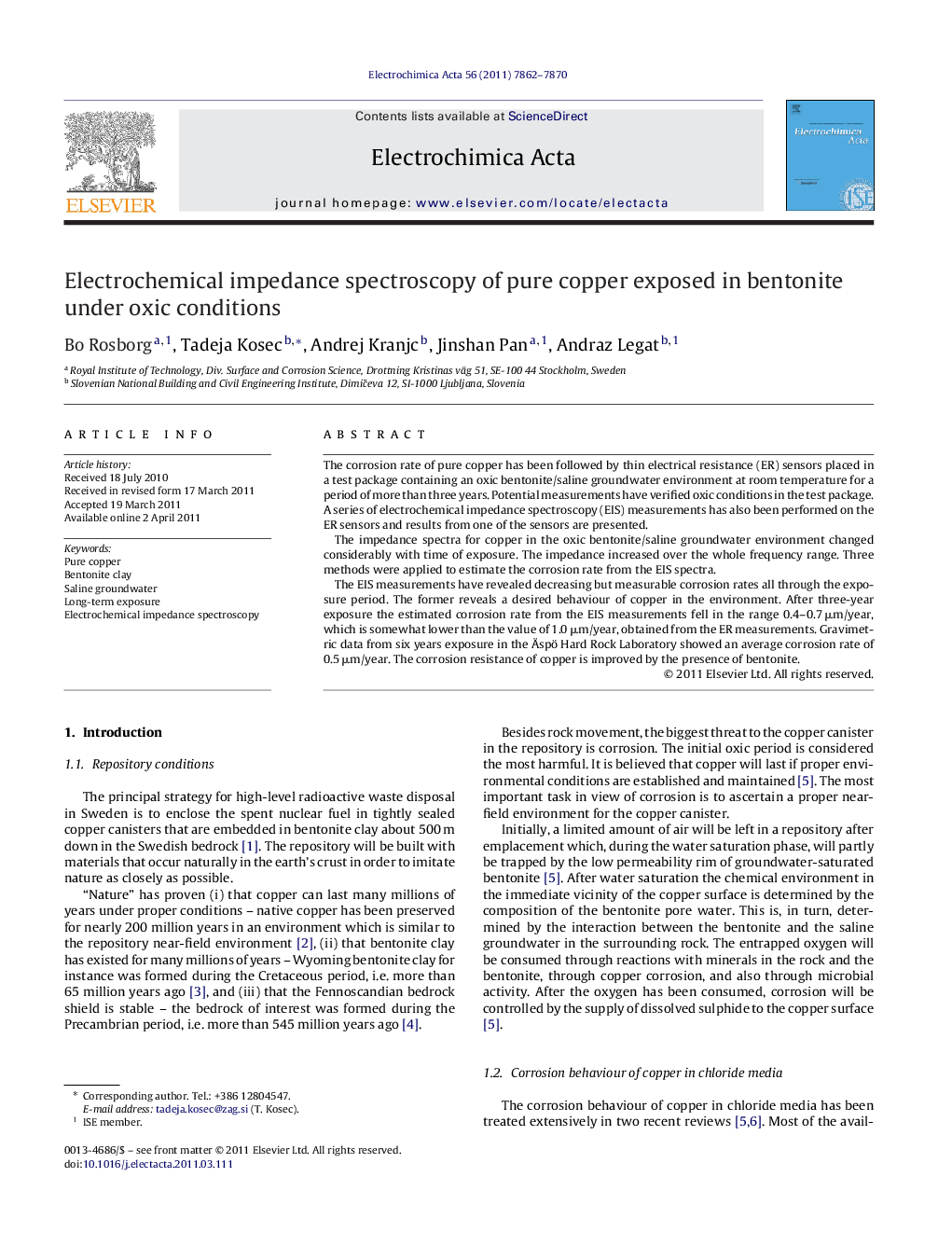| Article ID | Journal | Published Year | Pages | File Type |
|---|---|---|---|---|
| 190600 | Electrochimica Acta | 2011 | 9 Pages |
The corrosion rate of pure copper has been followed by thin electrical resistance (ER) sensors placed in a test package containing an oxic bentonite/saline groundwater environment at room temperature for a period of more than three years. Potential measurements have verified oxic conditions in the test package. A series of electrochemical impedance spectroscopy (EIS) measurements has also been performed on the ER sensors and results from one of the sensors are presented.The impedance spectra for copper in the oxic bentonite/saline groundwater environment changed considerably with time of exposure. The impedance increased over the whole frequency range. Three methods were applied to estimate the corrosion rate from the EIS spectra.The EIS measurements have revealed decreasing but measurable corrosion rates all through the exposure period. The former reveals a desired behaviour of copper in the environment. After three-year exposure the estimated corrosion rate from the EIS measurements fell in the range 0.4–0.7 μm/year, which is somewhat lower than the value of 1.0 μm/year, obtained from the ER measurements. Gravimetric data from six years exposure in the Äspö Hard Rock Laboratory showed an average corrosion rate of 0.5 μm/year. The corrosion resistance of copper is improved by the presence of bentonite.
